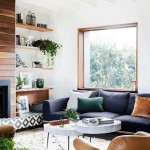DIY Room Decoration Ideas: Transforming Your Space on a Budget
Creating a personalized and aesthetically pleasing living space does not necessarily require expensive renovations or professional interior designers. Many individuals can achieve significant improvements in their room's ambiance and visual appeal through do-it-yourself (DIY) decoration projects. These projects offer a cost-effective and creative way to reflect personal style and enhance the comfort and functionality of a room. DIY decorations range from simple adjustments like rearranging furniture to more involved projects like creating wall art or repurposing existing items.
The following article explores a variety of DIY room decoration ideas, providing practical guidance and inspiration for transforming any space into a reflection of individual preferences and needs. These ideas are categorized by key decorative elements, offering a structured approach to planning and executing a room makeover.
Wall Decorations: Adding Personality and Visual Interest
Walls represent a significant canvas within any room, providing ample opportunity for creative expression. Utilizing DIY wall decorations can drastically alter the atmosphere of a space, making it feel more inviting, personalized, and visually stimulating. The options are diverse and scalable, ranging from simple prints and photographs to more elaborate painted murals and textured installations.
Framed prints and photographs remain a classic and versatile option. Instead of purchasing expensive pre-made frames, consider constructing simple frames from reclaimed wood or repurposing existing frames with a fresh coat of paint. Arranging these framed items in a gallery wall configuration can create a focal point and tell a personal story through curated images. The key to a successful gallery wall lies in thoughtful arrangement and consistent spacing between frames. Consider using paper templates to pre-plan the layout on the floor before committing to hanging the frames on the wall.
Painted wall murals offer a more ambitious, yet rewarding, DIY project. These can range from simple geometric patterns to intricate, hand-painted scenes. Stencils can be used to create precise designs, while freehand painting allows for greater artistic freedom. Before embarking on a mural project, it is imperative to properly prepare the wall surface by cleaning and priming it. Consider practicing the design on a smaller scale first to refine the technique and color palette. When choosing colors, consider the overall room decor and the desired mood. Calming blues and greens are suitable for bedrooms, while vibrant yellows and oranges can energize a living room.
Another popular option for wall decorations is creating textured installations. These can be made from a variety of materials, including fabric scraps, yarn, wood, or even repurposed household items. Macrame wall hangings, for example, add a bohemian touch to any room. Similarly, creating a wall hanging from driftwood collected on a beach can bring a natural, organic element into the space. The possibilities are limited only by imagination and resourcefulness. When creating textured wall installations, consider the weight of the materials and ensure that the installation is securely mounted to the wall.
Repurposing unexpected items for wall decor can add a unique and eclectic touch. Old license plates, vintage maps, or even discarded books can be transformed into interesting and eye-catching wall decorations. For instance, an old ladder can be mounted horizontally on the wall to create a unique shelving unit, or vintage plates can be arranged in a decorative pattern. The key is to think outside the box and find creative ways to give new life to discarded objects.
Furniture Transformation: Breathing New Life into Old Pieces
Revitalizing existing furniture is a cost-effective and environmentally conscious way to update a room's decor. Instead of purchasing new furniture, consider transforming existing pieces through simple DIY techniques. This can involve anything from repainting and refinishing to adding new hardware and upholstery.
Repainting furniture is a relatively straightforward DIY project that can dramatically alter the appearance of a piece. Before painting, it is imperative to properly prepare the surface by sanding, cleaning, and priming. Choose a paint that is appropriate for the type of material being painted, such as wood, metal, or plastic. Consider using chalk paint for a distressed, vintage look or a high-gloss paint for a more modern and sleek appearance. When choosing colors, consider the overall room decor and the desired effect. Neutral colors like white, gray, and beige are versatile and can complement a variety of styles, while bolder colors can add a pop of personality.
Adding new hardware, such as knobs, pulls, and handles, can significantly update the look of furniture. Opting for sleek, modern hardware can transform a dated dresser into a contemporary piece, while choosing vintage-inspired hardware can add character and charm. Hardware is readily available in a variety of styles and finishes at most hardware stores and online retailers. When replacing hardware, ensure that the new hardware is compatible with the existing holes or that new holes are drilled accurately.
Upholstering furniture, while more challenging than repainting, can completely transform a piece and give it a new lease on life. This can involve replacing worn-out fabric on chairs, sofas, or headboards. When choosing fabric, consider the durability, color, and pattern. Opt for durable fabrics like canvas or denim for high-traffic areas, and choose colors and patterns that complement the overall room decor. Upholstering requires basic sewing skills and the use of tools like a staple gun and fabric scissors. There are numerous online tutorials and resources available to guide novice upholsterers through the process.
Repurposing furniture is another creative way to transform a room's decor. For example, an old ladder can be transformed into a bookshelf, or a vintage suitcase can be turned into a side table. The possibilities are endless and depend on the individual's creativity and resourcefulness. When repurposing furniture, consider the functionality and safety of the piece. Ensure that the repurposed item is stable and secure and that it serves a practical purpose in the room.
Lighting and Textiles: Enhancing Ambiance and Comfort
Lighting and textiles play a crucial role in creating the overall ambiance and comfort of a room. DIY projects in these areas offer a cost-effective way to enhance the mood, add texture, and personalize the space.
Creating DIY lampshades is a relatively simple way to update the look of an existing lamp. This can involve covering an old lampshade with new fabric, adding embellishments like beads or ribbons, or creating a completely new lampshade from scratch using materials like wire and paper. When choosing fabric for a lampshade, consider the color, pattern, and translucency of the fabric. Light-colored fabrics will allow more light to pass through, while darker fabrics will create a softer, more diffused light. Ensure that the fabric is properly attached to the lampshade frame using glue or sewing techniques.
String lights are a versatile and inexpensive way to add a warm and inviting glow to any room. These can be draped around furniture, hung on walls, or strung across ceilings. Consider using different types of string lights, such as fairy lights, globe lights, or LED strip lights, to create different effects. String lights can also be used to highlight specific features in the room, such as artwork or plants. When using string lights, ensure that they are properly secured and that they do not pose a fire hazard.
Creating DIY throw pillows is a simple and satisfying way to add color, texture, and comfort to a room. This can involve sewing new pillow covers from fabric scraps, embellishing existing pillow covers with embroidery or appliques, or creating completely new pillows from scratch using batting and fabric. When choosing fabric for throw pillows, consider the color, pattern, and texture. Opt for durable fabrics like cotton or linen for everyday use, and choose colors and patterns that complement the overall room decor. Experiment with different shapes and sizes of throw pillows to create a visually interesting arrangement.
DIY curtains and window treatments offer another opportunity to personalize a room's decor. This can involve sewing curtains from fabric, creating Roman shades from fabric and dowels, or repurposing existing items like tablecloths or scarves into window coverings. When choosing fabric for curtains, consider the color, pattern, and weight of the fabric. Heavier fabrics will block out more light, while lighter fabrics will allow more light to pass through. Ensure that the curtains are properly hung and that they complement the overall room decor.
Adding rugs and textiles can dramatically increase the comfort and visual appeal of a room. Consider creating a DIY rug from fabric scraps or repurposing old blankets or quilts into rugs. These can add warmth, texture, and personality to a space. Alternatively, layering existing rugs can create a more luxurious and inviting atmosphere. When choosing rugs and textiles, consider the color, pattern, and texture. Opt for durable materials that can withstand wear and tear, and choose colors and patterns that complement the overall room decor.

20 Diy Room Decor Ideas For The Win Unique With S

Diy Room Décor Ideas For Bedroom Design Makeover Beautiful Homes

20 Diy Room Decor Ideas Designs For Small Kids

23 Creative Diy Wall Decor Ideas

Classy Diy Bedroom Wall Ideas Decor For

20 Diy Room Decor Ideas Designs For Small Kids
:max_bytes(150000):strip_icc()/diy-dorm-decor-1-5b2cf51e3de4230036ff8241.jpg?strip=all)
25 Diy Ideas For The Best Dorm Room Decor

50 Fun And Easy Diy Room Decor Ideas That Won T Break The Bank

Diy Room Decor And Design Ideas For Home

Diy Room Decor And Design Ideas For Home







